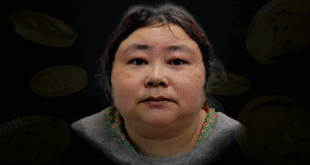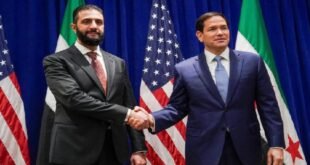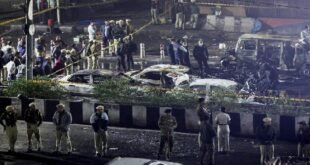10-08-2025
HONG KONG/ TAIPEI: The exercise presented a fraught scenario; China’s military had blockaded Taiwan by air and sea, and Southeast Asian countries were grappling with how to evacuate as many as 1 million of their nationals trapped on the besieged island.
 Over two days in April at a Singapore hotel, some 40 participants and observers in the war game, including serving and retired Asia-Pacific officials and military officers, as well as security scholars, simulated their responses to the unfolding crisis, according to four people familiar with the discussions.
Over two days in April at a Singapore hotel, some 40 participants and observers in the war game, including serving and retired Asia-Pacific officials and military officers, as well as security scholars, simulated their responses to the unfolding crisis, according to four people familiar with the discussions.
Hours ticked by as some players weighed unified action through the Association of Southeast Asian Nations, while others reached out to the mock US, Chinese and Japanese delegates to negotiate special air and sea corridors to extract foreign nationals. Eventually, the people said, a stark conclusion emerged; the Southeast Asian states needed a Singaporean airlift to have a chance of evacuating their people.
“Nothing was moving until the Singaporeans stepped in at the 11th hour,” said one participant in the event at the Jen Singapore Tanglin hotel. “They had found a way of getting their own people out, and offered to get others out, too.”
Reflecting its discreet and decades-old security presence inside Taiwan, where its forces train, Singapore was able to leverage access to airfields and aircraft, the person said but the exercise ended before any detailed discussion of how Singapore had reached a deal with China to secure an evacuation route through the blockade, or how precisely it would work, three of the people told media.
The previously unreported exercise comes amid an escalating battle between the US and China for dominance in the Asia-Pacific region. It offers a rare window into contingency planning over Taiwan, which some Asian and Western military attaches and security analysts say is becoming increasingly necessary because an assault on the island by Beijing could draw in the US and imperil other countries.
 While the scenario didn’t reflect official policies, participants playing the roles of foreign and defence ministers worked from the known positions of at least nine governments depicted in the simulation, said the four people, who like some others spoke on the condition of anonymity to discuss a sensitive matter. Besides Singapore, China, Taiwan and the US, the rest included Indonesia, Vietnam and the Philippines, they said.
While the scenario didn’t reflect official policies, participants playing the roles of foreign and defence ministers worked from the known positions of at least nine governments depicted in the simulation, said the four people, who like some others spoke on the condition of anonymity to discuss a sensitive matter. Besides Singapore, China, Taiwan and the US, the rest included Indonesia, Vietnam and the Philippines, they said.
Southeast Asians account for about 94% of the almost 1 million foreign national’s resident in Taiwan, according to Taiwan’s National Immigration Agency. Indonesians, Vietnamese and Filipinos make up the vast majority of those foreigners, with comparatively small numbers of Japanese and Americans.
Singapore’s defence ministry said it wasn’t involved in the “workshop” and none of its officials attended in any capacity. Neither the defence nor foreign ministries addressed media questions about Singapore’s military presence in Taiwan and planning for Taiwan conflict scenarios, including evacuations.
China’s foreign ministry said it had “always resolutely opposed countries with whom it has diplomatic relations having any form of official relations with the Taiwan region, including military dialogue and cooperation,” adding that it wasn’t aware of the circumstances of the exercise.
The London-based International Institute for Strategic Studies (IISS), which organized the exercise, told in a statement that participants had attended in their private capacities, and that it could not comment on “discussions, attendees, or any other elements.”
Taiwan’s defence ministry and the ASEAN Secretariat in Jakarta didn’t respond to questions. (Int’l News Desk)
 Pressmediaofindia
Pressmediaofindia




